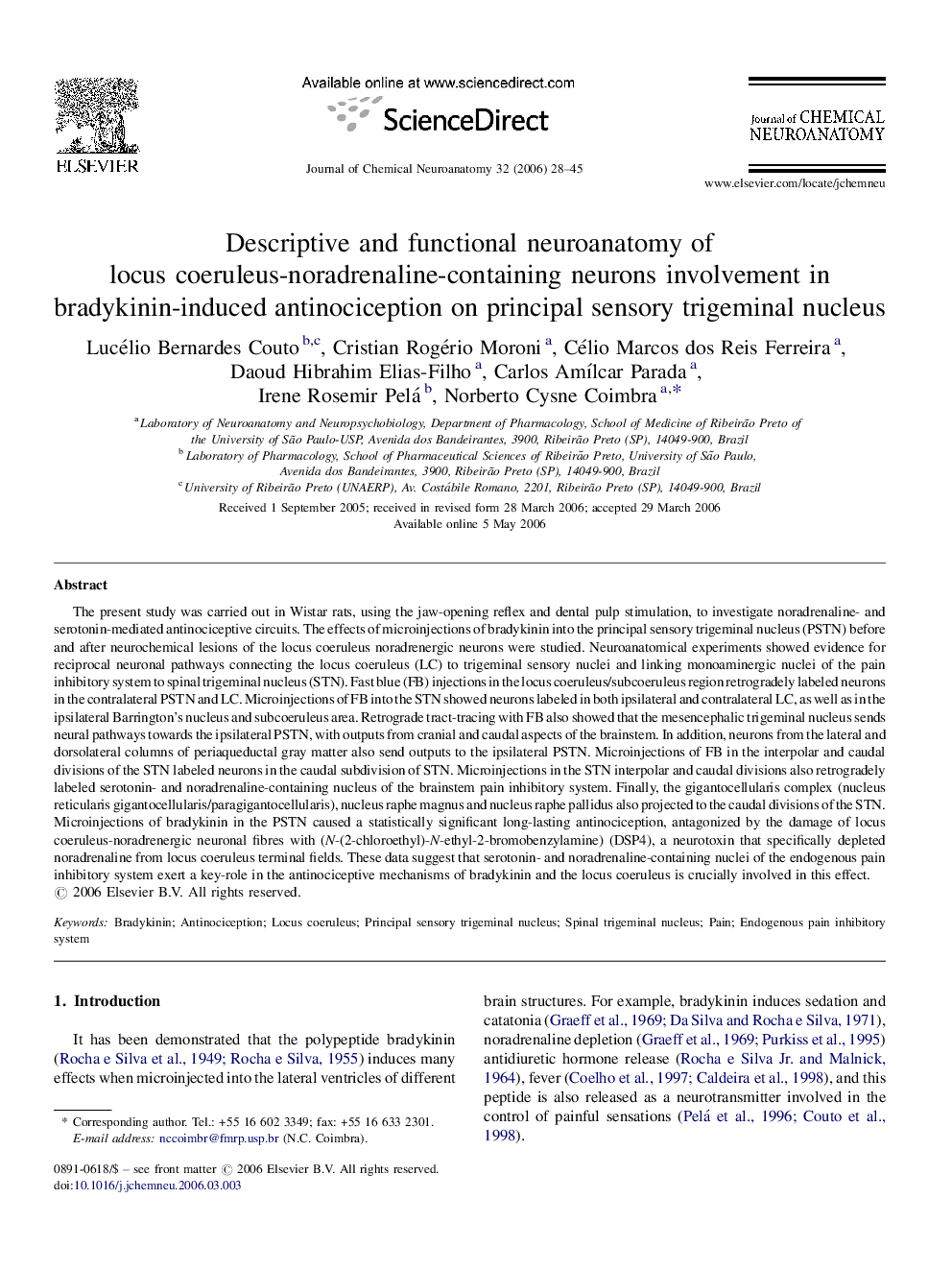| Article ID | Journal | Published Year | Pages | File Type |
|---|---|---|---|---|
| 1989488 | Journal of Chemical Neuroanatomy | 2006 | 18 Pages |
The present study was carried out in Wistar rats, using the jaw-opening reflex and dental pulp stimulation, to investigate noradrenaline- and serotonin-mediated antinociceptive circuits. The effects of microinjections of bradykinin into the principal sensory trigeminal nucleus (PSTN) before and after neurochemical lesions of the locus coeruleus noradrenergic neurons were studied. Neuroanatomical experiments showed evidence for reciprocal neuronal pathways connecting the locus coeruleus (LC) to trigeminal sensory nuclei and linking monoaminergic nuclei of the pain inhibitory system to spinal trigeminal nucleus (STN). Fast blue (FB) injections in the locus coeruleus/subcoeruleus region retrogradely labeled neurons in the contralateral PSTN and LC. Microinjections of FB into the STN showed neurons labeled in both ipsilateral and contralateral LC, as well as in the ipsilateral Barrington's nucleus and subcoeruleus area. Retrograde tract-tracing with FB also showed that the mesencephalic trigeminal nucleus sends neural pathways towards the ipsilateral PSTN, with outputs from cranial and caudal aspects of the brainstem. In addition, neurons from the lateral and dorsolateral columns of periaqueductal gray matter also send outputs to the ipsilateral PSTN. Microinjections of FB in the interpolar and caudal divisions of the STN labeled neurons in the caudal subdivision of STN. Microinjections in the STN interpolar and caudal divisions also retrogradely labeled serotonin- and noradrenaline-containing nucleus of the brainstem pain inhibitory system. Finally, the gigantocellularis complex (nucleus reticularis gigantocellularis/paragigantocellularis), nucleus raphe magnus and nucleus raphe pallidus also projected to the caudal divisions of the STN. Microinjections of bradykinin in the PSTN caused a statistically significant long-lasting antinociception, antagonized by the damage of locus coeruleus-noradrenergic neuronal fibres with (N-(2-chloroethyl)-N-ethyl-2-bromobenzylamine) (DSP4), a neurotoxin that specifically depleted noradrenaline from locus coeruleus terminal fields. These data suggest that serotonin- and noradrenaline-containing nuclei of the endogenous pain inhibitory system exert a key-role in the antinociceptive mechanisms of bradykinin and the locus coeruleus is crucially involved in this effect.
